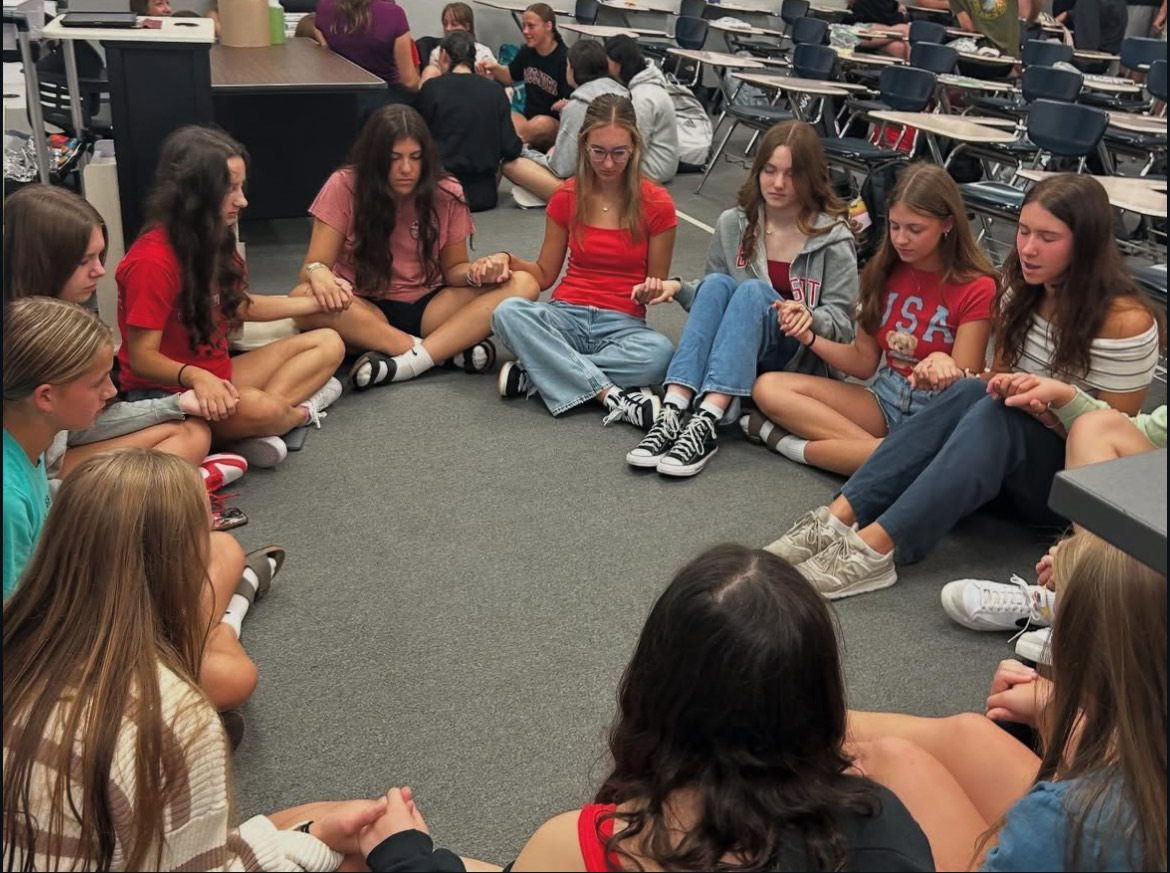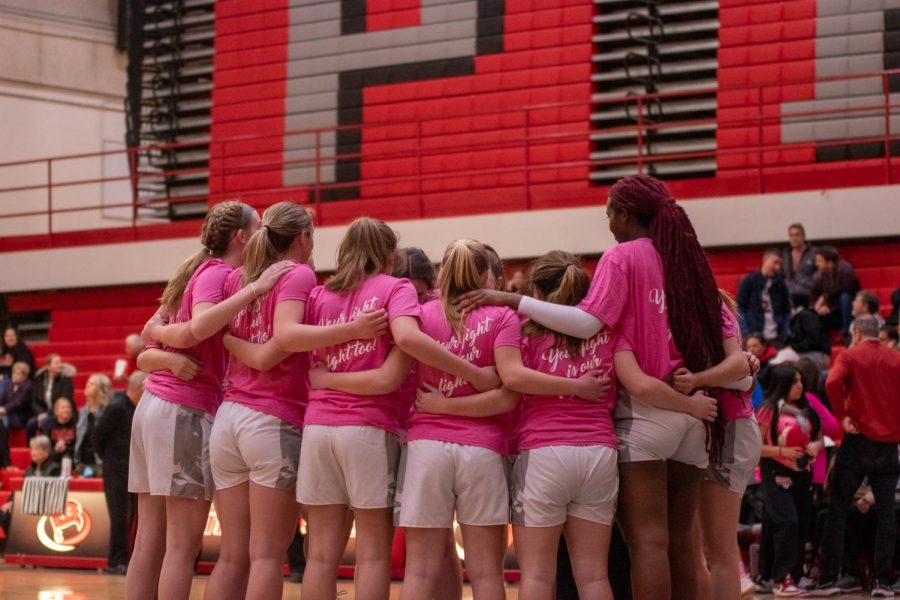Student artists in 3D Studio Art, 3D Art 2: Clay/Sculpture/Design and AP Studio 3D Art/Design sought to spread positivity within the school in an unusual medium: origami displays.
These origami displays range from a variety of different origamis and structures. Paper cranes with phrases like “you are going to be okay” and butterflies hanging down the counselor office windows are just some of the many displays hung up around the school.
Divided into tables, students in art teacher Russell Horvath’s fifth period class had full creative liberty on the sculptures. Each table of students took around a week to compose their displays.
TJ Julamoke, a senior taking 3D Studio Art, helped create the display hanging up in the media center. When asked about the physical strain of making the origami, Julamoke shrugged.
“You get used to it pretty quick,” Julamoke said. “It’s really simple origami pieces.”
While the students were folding origami, Horvath helped guide the students’ creative ideas.
“Our textbook is ourselves,” said Horvath, who is chairman of the Art Department. “We’re looking at other people’s experiences in life, processing them as our own, and then telling our experiences.”
By allowing students to look at their displays with full creative freedom, Horvath hoped to allow students an outlet for their expressions and ideas.
The students drew inspiration from the “You Are Beautiful” campaign started by Matthew Hoffman. Hoffman started the project in 2002 to spread positivity in areas where negativity was abundant, sticking gray stickers all over Chicago to spread the words “you are beautiful.” Now, the project can be found all over the world, pushing short messages of positivity for the general public.
The project was also inspired by the Children’s Peace Monument in Hiroshima Peace Park, where people send in paper cranes to commemorate the children in World War II. Horvath wanted the origami displays to resonate and evoke different feelings in every viewer.
The artists focused on creativity, visual appearance and structurally sound quality. Using tape is generally avoided in 3D art because of its quick deterioration. Students overcame this obstacle by using objects like magnets, fishing line and staples to hang up their displays.
“Each solution was a very unique take on the problem, and I’m proud of each one,” Horvath said. “They really exceeded my expectations.”
They also thought about location; many of the students placed their displays in the main hallway and cafeteria hallway to make sure more students saw their messages, while some students placed theirs in the media center. Two are displayed in the media center, two are in the cafeteria hallway and two are in the main hallway.
Ultimately, the goal of these messages was to spread joy and positivity in a fun way. The students and Horvath wanted to create small messages of hope that everyone could relate to.
Callie Swierczek, a senior taking 3D Art 2: Clay/Sculpture/Design, helped create the large heart display in the cafeteria hallway. She chose the heart because of its symbolism for love.
“We never know what [students] could be going through,” Swierczek said. “A simple act of kindness could go a long way.”























